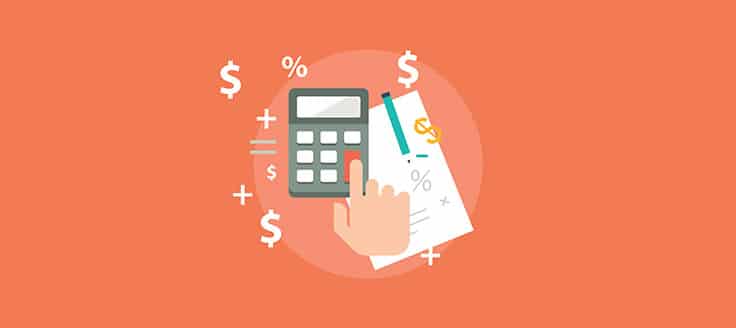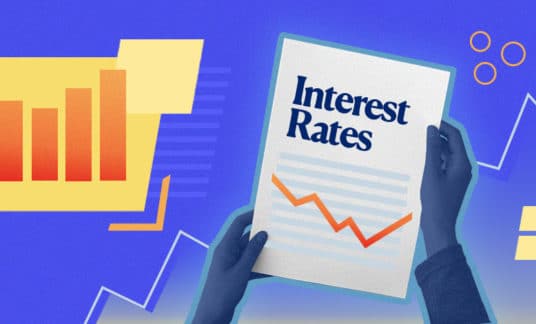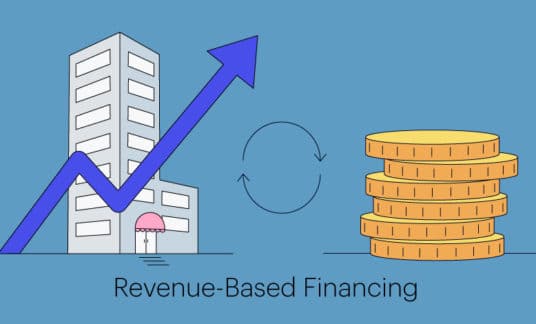Knowing how to find gross profit margin is a vital part of sound financial planning for a small business.
This ratio, which reveals your profits after covering costs, helps determine how profitable it will be to sell a particular product or service. It also enables you to estimate how much volume you must sell to reach your financial goals.
Learn what gross profit is, how to find gross profit on sales, what constitutes a good margin ratio—and how you can improve your margins to grow your profits.
What Is Gross Profit Margin?
Gross profit margin measures profitability by comparing a company’s net revenue after costs with the total, or gross, revenue.
The metric lets you know how much profit you’re retaining per sale once you’ve taken out the variable costs of the goods and services you provide.
For example, if you’re selling a product made of wood, plastic or metal, you have to pay for the cost of materials for each product you sell—and that cost comes out of your profit, lowering your gross profit margin. The same applies to costs such as direct labor involved in production, packaging, shipping, sales commissions and credit-card processing fees.
Gross profit margin is used by businesses to assess the profitability of each of the goods and services they provide. Comparing individual businesses, departments, or products by gross profit margins makes it easier to compare because business owners can see which ones produce more profit for each dollar of sales.
Why You Need to Know Gross Profit Margin
Knowing how to calculate gross profit percentage helps you determine the profitability of your business model.
The lower your cost of goods sold (COGS), the more revenue you retain, and the higher your gross profit margin. On the other hand, the higher your COGS, the lower your retained revenue and the lower your profit margin.
This information will help you make crucial business decisions, such as whether you need to find a less expensive source of materials or labor to become more profitable. It also lets you know how much of your revenue you have available to put toward operating expenses, taxes and other costs.

How to Calculate Gross Profit Rate
The formula for how to find the gross profit ratio is relatively simple. The ratio is calculated by taking the quantity of your revenue minus the cost of goods sold and dividing the result by your revenue:
Gross profit margin = (Revenue – COGS) / Revenue
The result of this formula is a ratio that compares the amount of revenue you retain after covering your costs with your total revenue.
Say you’re selling a product for $5 per unit, and it costs you $3 per unit for items such as materials, direct labor and credit-card processing.
This means that for every $5 sale, you get to keep $2, which is the result for the numerator of your ratio.
Your gross profit ratio would then be $2 divided by $5, equivalent to 2/5, or 40%.
Variations to Gross Profit Margin Formula
When it comes to how to find gross profit accounting, some factors might affect the basic formula as well as some variations of the formula.
The most common variation is in what constitutes the cost of goods sold. COGS include variable costs, namely expenses that vary directly with the number of sales you make. The more units of a product you sell, the higher your materials costs.
Variable costs can include:
- Materials
- Production machinery and depreciation
- Utilities for production plants and warehouses
- Direct labor used for production
- Packaging
- Shipping
Note the cost of goods sold doesn’t include fixed expenses, which are operating expenses and other costs that don’t vary with the number of sales you make.
-
For Example
If you were analyzing the gross profit margin of a product that you sell and found that the profit margins were too low, you could look to these variable costs to see whether there was any room for improvement.
If you could identify more cost-effective materials or packaging that could be used to manufacture and ship your product—without hurting sales—these could offer opportunities to improve your gross profit margin.
Fixed costs include:
- Rent
- Office expenses such as utilities and supplies
- Payroll
- Marketing and sales
- Insurance
- Professional fees for services such as bookkeeping
- Interest
- Taxes
Items such as these shouldn’t be counted with your cost of goods sold, so they shouldn’t be subtracted from your revenue in your gross profit calculations.
If you wanted to try to improve your gross profit margin ratio for a particular product, cutting your marketing costs for that profit wouldn’t help your ratio whatsoever.
Indeed, it might hurt your profit margins by lowering your sales, and hence your gross revenue.
Regarding FIFO, LIFO and AVCO
Another issue to consider is that COGS can vary over time because of changes in materials, inventory and shipping costs. To address this, accountants have developed some special methods of calculating inventory.
- One is called first in, first out (FIFO), which means the cost of inventory is calculated by assuming that items purchased first are sold first, even if the oldest items haven’t been sold yet.
- The opposite method, last in, first out (LIFO), assumes the most recent items purchased are sold first.
- There’s also the average cost method (AVCO), which estimates inventory costs by calculating the weighted average cost of inventory held after each new inventory acquisition.
When to Use What
- FIFO is most commonly used because it’s the simplest.
- LIFO, which isn’t allowed under specific accounting standards, is used mainly in certain industries (such as the oil industry) to defer payment of income taxes when inventory costs are increasing because of inflation.
- AVCO is used when it’s difficult to distinguish individual inventory items.
Your accounting professional should know how to find gross profit using FIFO, how to find gross profit LIFO methods and how to use AVCO.
Finding the Key Numbers
If you need to know how to find gross profit in annual financial statements, search for the lines for revenue and for the cost of goods (or services if applicable, which would be listed as a line item under operating expenses) and then plug them into the gross profit equation.
If you need to know how to find gross profit on a balance sheet, look for the same two numbers.
Evaluating Your Gross Profit Margin
What constitutes a good profit margin varies with the industry and income goals. A retail company that relies on physical inventory often has to pay more for goods than a service-based business such as a restaurant, so retailers may have to mark up their products more to achieve a high-profit margin.
A manufacturer may have an average gross profit margin of about 35%, with expenses such as materials and labor consuming a significant share. A grocery store chain may average a margin of 26%-30%, spent mainly on food and payroll. Restaurants may average 35%-40%, going mostly toward food and payroll. Clothing retailers can average 48%-50%, relying on high markups to offset discount sales.
Whether the profit margin is good also depends on whether you’re achieving your financial goals. If you aren’t, it may be time to adjust your margins.

How to Improve Your Gross Profit Ratio
If you aren’t happy with your profit margins on a particular good or service, there are some steps you can take to improve these metrics:
- If you’re in an industry that relies on selling physical merchandise, aim to lower the cost of the goods you purchase. Consider negotiating a bulk discount deal with your supplier — or seek a different supplier. You could also try using less expensive materials or a more efficient production process.
- One strategy that anyone can try is to test raising your prices and see how it affects sales volume and revenue. Be careful, though, as this strategy can be risky. You don’t want to do anything that can hurt your sales in the long-term.
- In a service-based industry, using automation or outsourcing to increase your efficiency and cut costs can help improve your margins. Raising prices for your current line of service or introducing a line of service with a higher price point can bolster your gross profit ratio, too.
Optimizing your margins can help you increase your profits and achieve your financial goals.
Lowering your cost of goods sold should form part of a comprehensive financing strategy that can include tactics such as increasing efficiency, automation, outsourcing, bolstering marketing activity and using small business loans to maintain sustainable cash flow. See our finance guides to see how financing can help strengthen your profits.











